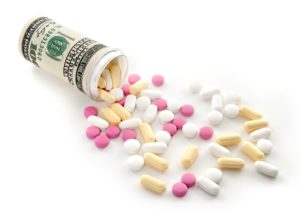Patient advocacy groups or Big Pharma benefactors?

Patient advocacy groups for those with cancer, Alzheimer’s, HIV and other diseases often lobby Congress and state legislators on behalf of their concerns, but they seldom reveal where their money comes from.
At least 83 percent of the nation’s 104 largest patient advocacy groups take contributions from the pharmaceutical, medical device and biotech industries, according to a study published in the New England Journal of Medicine.
Of the 18 nonprofits that are not reporting money from pharmaceutical companies, all but five failed to disclose donors, the study found. Of all 104 nonprofits surveyed, only one explicitly said the organization does not take industry money.
“If you’re a policymaker and you want to hear from patients, there’s a danger if there’s an undisclosed or under-disclosed conflict of interest,” Matthew McCoy, a bioethicist at the University of Pennsylvania and the paper’s primary author, told Kaiser Health News.
The problem, McCoy said, “the ‘patient’ voice is speaking with a pharma accent.”
A separate survey of top executives at nonprofit patient advocacy organizations found 67 percent received financial support from for-profit companies, and 12 percent received more than half of their funding from industry.
The authors of the survey, published in the medical journal JAMA, called for increased transparency and stronger conflict-of-interest policies.
Both these papers come at a time of heightened scrutiny of advocacy groups and were released just days before Pharma giant Pfizer reported receiving a subpoena related to its support of patient advocacy groups.
U.S. officials have not commented, but they could be looking into the larger issue of drug makers potentially covering patients’ copays for expensive drugs and leaving the rest of the cost up to taxpayers.
What’s your Big Pharma story? Take our survey on prescription drug prices, we want to know how you are affected.